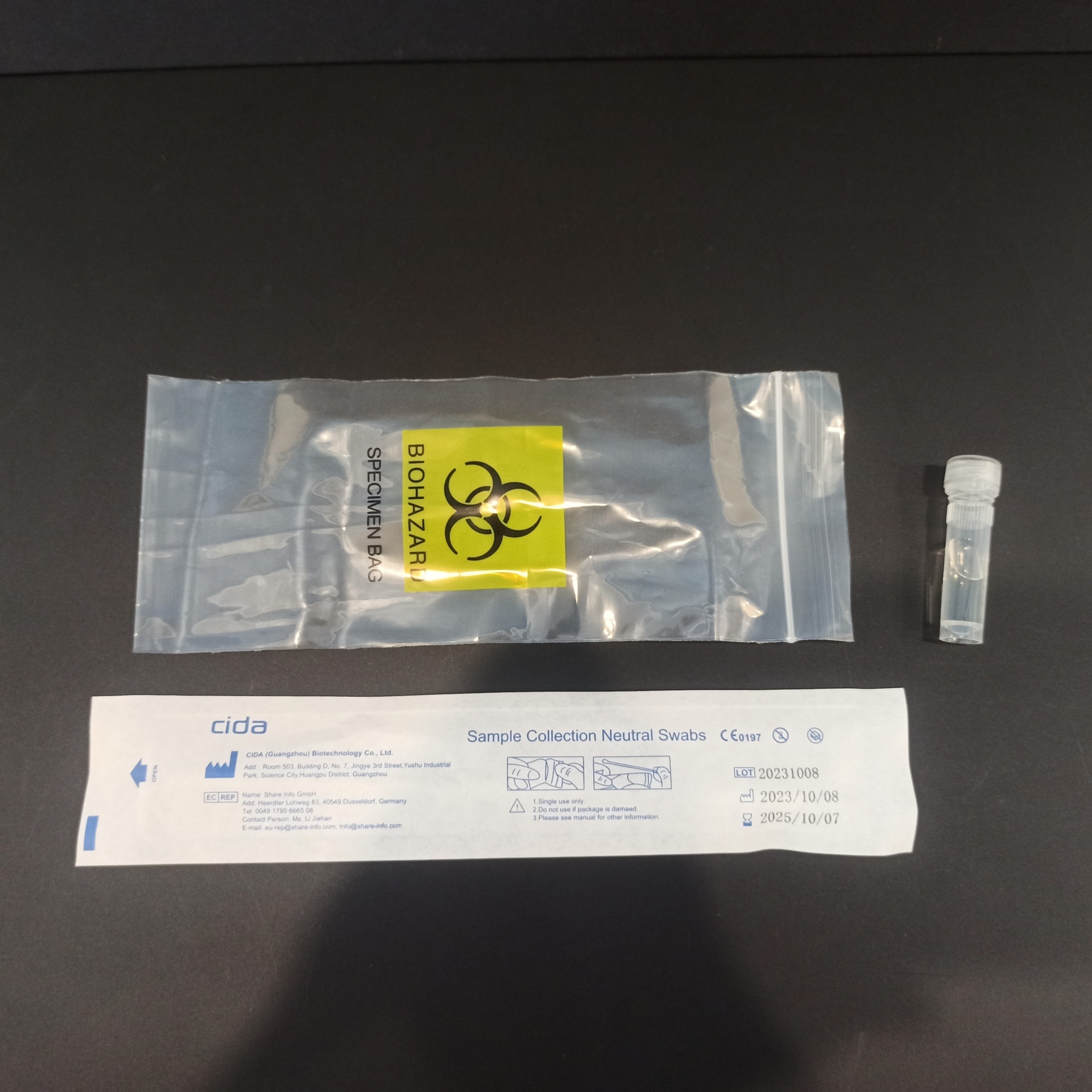DNA Genetic Testing Cell Storage Solution Product Introduction
Release time:
Mar 25,2024
Cida (Guangzhou) Biotechnology Co., Ltd. is located in the beautiful flower city-Guangzhou City. It is a high-tech enterprise integrating R & D, production and service of medical consumables. The company has passed ISO 13485 quality management system certification and EU CE certification. The company's products are exported to many countries and regions around the world, and has become a supplier in this field in South China.
CIDA (Guangzhou) Biotechnology Co., Ltd.
DNA Genetic Testing Cell Storage Solution Product Introduction
With the advancement of modern technology, genetic testing has become an important means for people to understand their physical condition and health.特别是DNA genetic testing, which can predict potential disease risks and genetic traits by analyzing an individual’s genetic information. To facilitate personal genetic testing, disposable DNA genetic testing oral swab kits have emerged. These kits contain a cell preservation solution that effectively protects the DNA in the collected oral samples, ensuring the accuracy and reliability of the test results.
I.What is DNA cell preservation solution used for? What are its advantages?
DNA cell preservation solution is a specialized liquid solution used for storing and protecting DNA samples. It has many advantages, including extending the storage time of DNA samples, preventing DNA degradation, and maintaining the integrity and stability of DNA. DNA cell preservation solution is widely used in many areas of scientific research and medical practice.
II. Components of DNA cell preservation solution
DNA cell preservation solution typically contains a variety of ingredients, including buffer saline, enzyme inhibitors, stabilizers, and antioxidants. The buffer saline provides an appropriate pH environment for the storage of DNA samples, maintaining DNA stability; enzyme inhibitors can inhibit the activity of hydrolases and nucleases, preventing DNA degradation and damage; stabilizers can increase the stability of DNA in the preservation solution, preventing denaturation and loss; antioxidants can slow down the oxidation process of DNA, further protecting the integrity of DNA.
DNA gene testing cell preservation solution can reduce the impact of oxidative damage on DNA by adding a certain amount of antioxidants and free radical scavengers to the preservation solution. Research by Evans and others on evaluating the degradation pathways of plasmid DNA in drug formulations through accelerated stability studies showed that components such as EDTA, which can inhibit nucleases, can effectively reduce DNA strand breaks. Using this method, DNA can remain stable at room temperature for up to two years while still maintaining 90% of its original helical structure. [1]
III. Functions of DNA Cell Preservation Solution
The primary function of DNA cell preservation solution is to extend the storage time of DNA samples. DNA is susceptible to damage from external environmental factors at room temperature, such as temperature, humidity, and ultraviolet radiation, which can lead to DNA degradation. DNA cell preservation solution provides an ideal storage environment that maintains the integrity and stability of DNA, thereby prolonging the storage time of DNA samples. Researchers can use DNA cell preservation solution to store DNA samples for several months or even years for subsequent experimental research and data analysis.
Additionally, DNA cell preservation solution can prevent DNA sample degradation. During the routine collection and extraction of DNA samples, DNA can be degraded by factors such as enzyme activity, oxidation, and temperature changes. The components in DNA cell preservation solution, such as enzyme inhibitors, stabilizers, and antioxidants, can effectively inhibit the actions of these damaging factors, maximizing the protection of DNA. This is crucial for subsequent gene analysis, DNA sequencing, and other research, as only by maintaining the integrity of DNA can experiments and analysis results be accurate and reliable.

IV. Features of DNA Cell Preservation Solution Kits
1.Sample Stability Preservation: DNA cell preservation solution effectively protects DNA molecules from degradation and damage, ensuring the long-term stability of sample preservation.
2.Prevention of Cell Death: The buffering components in the DNA cell preservation solution provide an appropriate cellular environment, delaying the occurrence of cell death and maintaining cell integrity and vitality.
3.Easy Sample Handling: Using DNA cell preservation solution allows for the direct addition of samples into the preservation solution, eliminating the need for freezing or other special treatments, making sample handling more convenient.
4.Wide Application: DNA cell preservation solution is suitable for a variety of sample types, including blood, tissue, cells, etc., offering a wide range of applications.
5.Cost-effective and Efficient: Compared to cryopreservation, DNA cell preservation solution is more cost-effective, eliminating the need for specialized freezing equipment and low-temperature transportation, thus reducing preservation costs and sample transportation risks.

VI. Product Usage
Using a DNA genetic testing cell preservation solution kit for sampling is very simple, just follow the steps in the instructions. First, gently swab the surface of the oral mucosa with the swab head to ensure the collection of enough cell samples. Then, place the swab into a container filled with cell preservation solution, making sure it is fully immersed. Next, seal the container to prevent external contamination. Finally, send the collected sample to a professional genetic testing institution for testing.
VII. Matters to Note When Using
1.This product is only intended for in vitro diagnosis.
2.After collecting cell samples with a swab, the swab head should be fully immersed in the sample preservation solution to maximize cell retention.
3.If a insufficient cell quantity is found during slide preparation, you can appropriately increase the sample volume.
4.The collected samples must be guaranteed to be fresh and fixed in a timely manner to prevent cell autolysis.
VIII. Cited Literature
[1] Liu Yawen, A brief discussion on the research progress of DNA preservation [J]. Food and Biology, 2016, 7(7), 12-13.
Previous Page
Previous Page
Get a free quote!
More information
